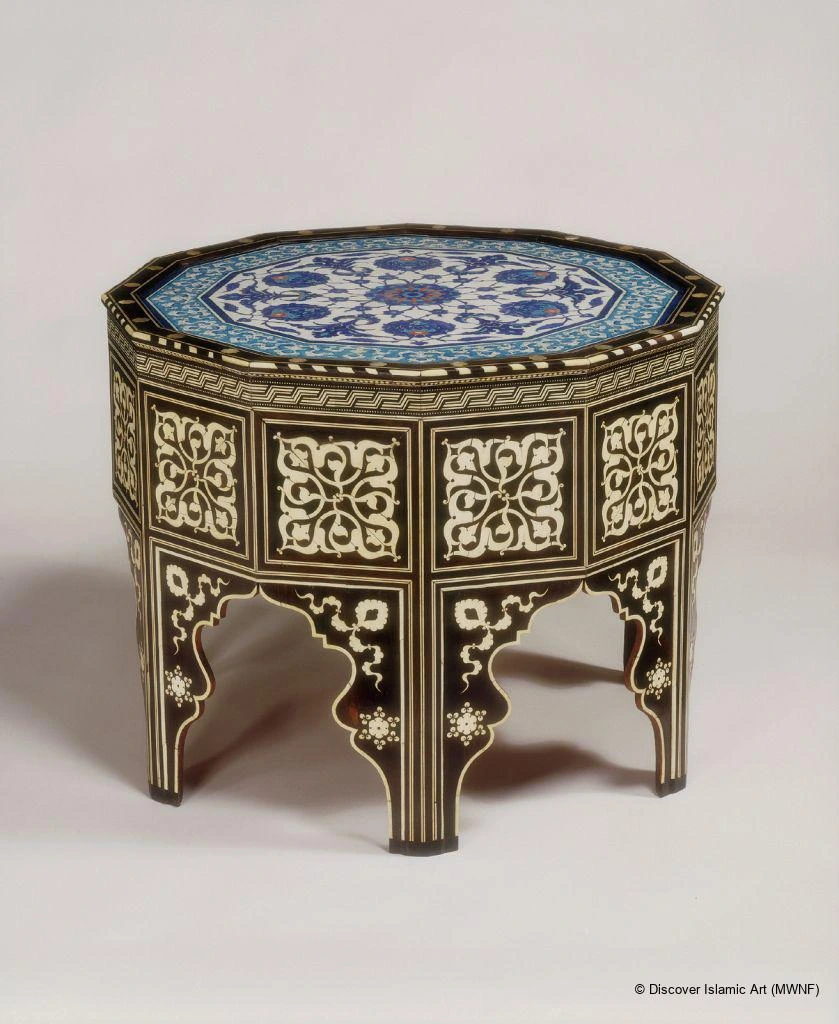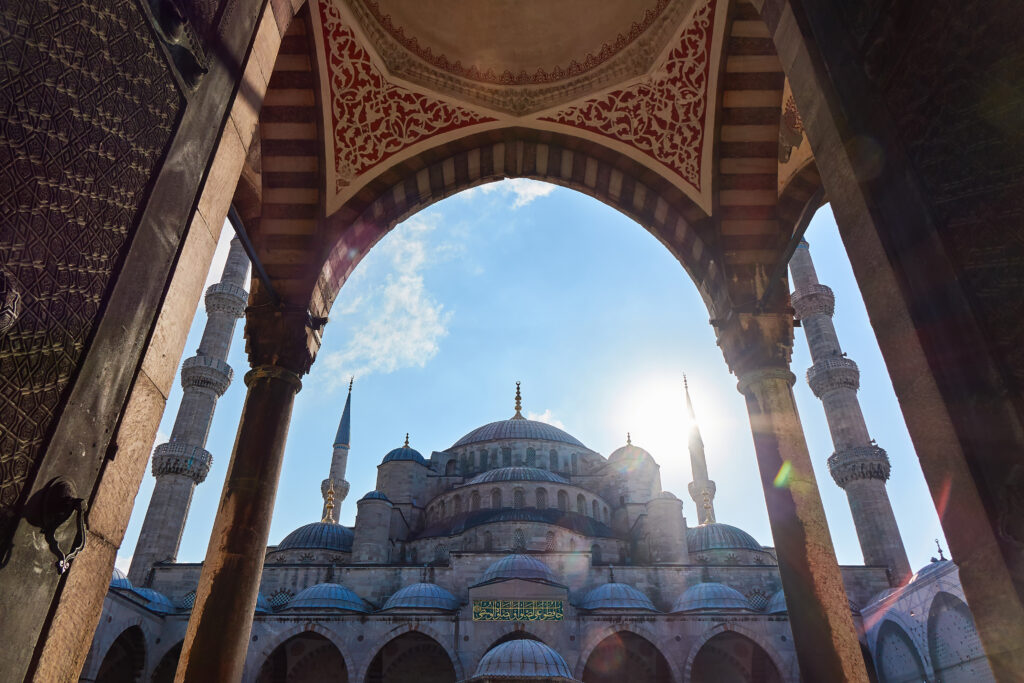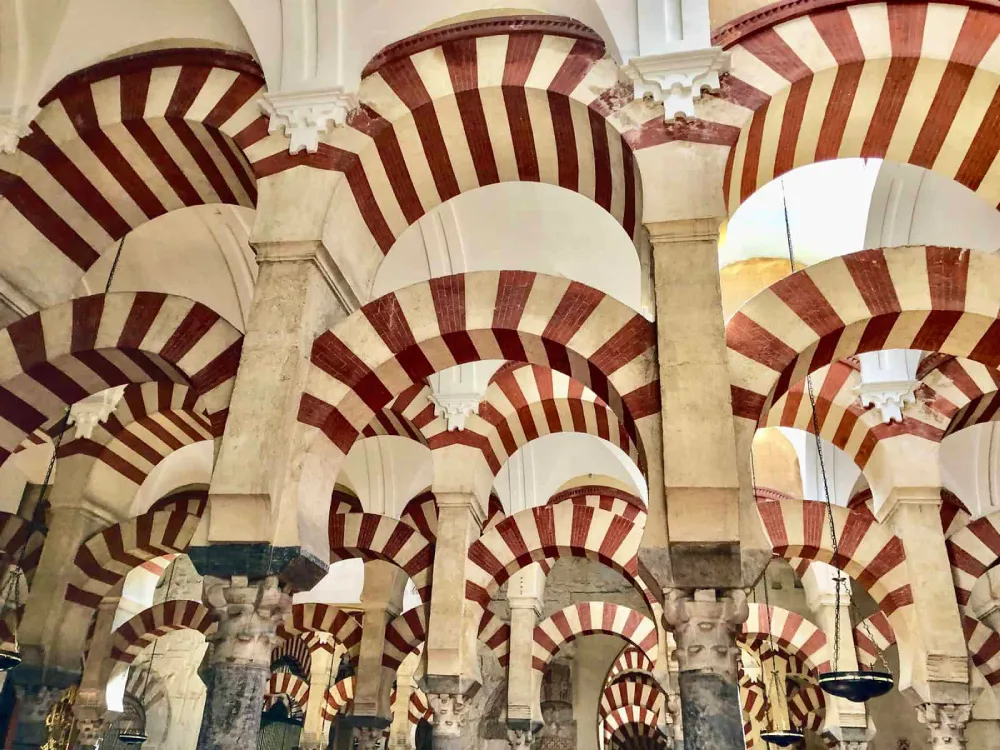Fasten your seatbelts, lovers of design, as we set off on an exhilarating odyssey through epochs and over borders to unearth the enchanting realm of Turkish architecture!
This journey is far from a typical touristic gaze. We’re venturing into a territory where the East greets the West in an extraordinary spectacle of cultural amalgamation, where age-old methods impart wisdom to contemporary breakthroughs.
Envision mosques soaring skyward, their domes shimmering as if they were pearls from the firmament. Visualize palaces embellished with elaborate tiling, each pattern narrating an enthralling tale poised for discovery.
Turkish architecture is a mosaic crafted from the legacies of Seljuk artistry to Ottoman splendor, a chronicle of a flourishing civilization across the ages.
Hone your perception and brace for the impact of pure craftsmanship, a profound narrative, and the perpetual allure that characterizes the Turkish architectural lineage. Prepare for an experience that will leave you breathless!
What is Turkish Architecture?
Turkish architecture refers to the architectural styles and traditions that have emerged in the region known as modern-day Turkey throughout its history.
It encompasses various periods and influences, reflecting the country’s unique geographical location and cultural heritage.
The influences of ancient Anatolian civilizations, Byzantine architecture, Islamic architecture, and the grandeur of the Ottoman Empire have shaped Turkish architecture. It represents a fusion of diverse architectural styles, resulting in a rich and distinctive architectural heritage.

What are the Characteristics of Turkish architecture?
Turkish architecture is characterized by several crucial elements contributing to its unique style and aesthetics.
These elements have evolved and are influenced by various historical periods and cultural traditions.
Here are some of the key aspects of Turkish architecture:
Central Domes
Central domes are a prominent feature of Turkish architecture. These large, often bulbous or onion-shaped domes are typically placed at the center of mosques, mausoleums, and other significant structures.
They symbolize grandeur, majesty, and the connection between heaven and earth. Arches, pendentives, or squinches often support the domes.
Minarets
Minarets are tall, slender towers that are an integral part of mosques in Turkish architecture. They serve as visual landmarks and are used to deliver the call to prayer (adhan).
Minarets are often adorned with decorative elements such as balconies, intricate patterns, and muqarnas (honeycomb-like decorative vaulting).
Iznik Tiles
Iznik tiles, or ceramic or pottery tiles, are widely used in Turkish architecture, particularly in mosques and palaces.
These colorful, hand-painted tiles feature intricate geometric and floral patterns, often in shades of blue, turquoise, and green. Iznik tiles add a vibrant and decorative element to the buildings’ walls, domes, and mihrabs (prayer niches).
Calligraphy
Islamic calligraphy holds great significance in Turkish architecture. Elaborate calligraphic inscriptions, typically in Arabic script, are found on the interior and exterior surfaces of mosques and other religious structures. These inscriptions often include verses from the Quran, conveying a sense of reverence and spirituality.
Courtyards
Turkish architecture often incorporates spacious courtyards, known as avlus, which serve as transitional spaces between the outside world and the interior of buildings.
Courtyards are typically surrounded by arcaded galleries and are used for communal gatherings, rituals, and social activities.
They provide a sense of openness and facilitate natural ventilation and lighting.
Muqarnas
Muqarnas is a decorative element consisting of intricate honeycomb-like vaulting. Turkish architecture commonly uses it to embellish domes, ceilings, and arches.
Muqarnas add depth, complexity, and visual interest to surfaces, creating a mesmerizing interplay of light and shadow.
Seljuk Star Motifs
The Seljuk period significantly influenced Turkish architecture. One of the distinctive decorative motifs from this era is the Seljuk star, also known as eight-pointed star patterns.
These geometric motifs are often seen in tilework, stone carvings, and architectural details, adding a sense of rhythm and harmony to the overall design.
Wooden Architecture
In certain regions of Turkey, particularly in areas with abundant forests, wooden architecture plays a significant role.
Wooden houses, known as konaks, are characterized by intricate woodwork, projecting windows, and ornate balconies.
The use of wood in architectural elements adds warmth and a traditional touch to the structures.
These elements collectively contribute to the rich and distinctive aesthetics of Turkish architecture. They showcase the fusion of different cultural influences and artistic traditions, resulting in a captivating architectural style that is both grand and intricate, timeless and evocative.

Famous Architectural Styles Introduced By the Turks
The Turks have introduced and contributed to several architectural styles throughout history. These styles reflect the cultural and historical developments of the Turkish people and their interactions with various civilizations. Here are some architectural styles that the Turks have introduced:
Seljuk Architecture
The Seljuk Turks, who arrived in Anatolia in the 11th century, brought with them a distinctive architectural style that blended Central Asian, Persian, and Islamic influences.
Seljuk architecture is characterized by monumental structures, including mosques, caravanserais, madrasas (theological schools), and mausoleums.
Ottoman Architecture
The Ottoman Empire, which spanned from the 13th to the early 20th century, left a lasting architectural legacy. Ottoman architecture evolved from the Byzantine and Seljuk traditions, incorporating elements of Islamic architecture.
Ottoman architects developed a unique style characterized by large domes, expansive courtyards, intricate tilework, and grandiose structures such as mosques, palaces, and public buildings.
The Hagia Sophia, the Topkapi Palace, and the Süleymaniye Mosque are prominent examples of Ottoman architecture.
Turkish-Islamic Architecture
Turkish-Islamic architecture refers to the architectural style that emerged as a result of the spread of Islam in Anatolia. It encompasses the architectural traditions of various Turkish dynasties, including the Seljuks, the Beyliks (regional Turkish states), and the early Ottoman period.
Turkish-Islamic architecture is characterized by the use of domes, minarets, calligraphy, geometric patterns, and decorative tilework. Mosques, madrasas, tombs, and baths are among the prominent structures.
Ottoman Revival Architecture
In the late 19th and early 20th centuries, during the declining years of the Ottoman Empire, Ottoman Revival architecture emerged as a response to Western architectural influences.
This style sought to revive and reinterpret the architectural elements of the Ottoman period. Ottoman Revival buildings often featured ornate facades, domes, and arches, blending traditional Ottoman design with Neo-Classical and Art Nouveau style elements.
Republican Architecture
Following the establishment of the Republic of Turkey in 1923, a new era of architectural development began.
Republican architecture aimed to reflect the modern and secular values of the young republic. Influenced by European architectural trends such as Art Deco, Bauhaus, and International Style, Turkish architects created buildings that emphasized simplicity, functionality, and geometric forms.
Examples of Republican architecture can be seen in government buildings, universities, and public housing projects.
These architectural styles introduced by the Turks have left a lasting impact on the built environment of Turkey and have contributed to the country’s architectural heritage.
They exemplify the cultural and historical richness of the Turkish people and their ability to adapt and synthesize various influences into unique and captivating architectural expressions.
What Makes Turkish Architecture Special?
The Ottoman Empire, which lasted for over six centuries, left an indelible mark on Turkish architecture. With its capital in Istanbul, the empire witnessed the construction of magnificent palaces, mosques, and public buildings.
The architectural marvels of the Ottoman era showcase grandeur, intricate ornamentation, and a harmonious balance between functionality and aesthetics.
The iconic Hagia Sophia, originally built as a Byzantine cathedral and later converted into a mosque, stands as a testament to the splendor of Ottoman architecture.
Its massive dome, stunning mosaics, and a blend of Byzantine and Islamic elements create an ethereal ambiance that has captivated visitors for centuries.
The Blue Mosque, or Sultan Ahmed Mosque, is another masterpiece of Ottoman architecture. Its elegant domes, six minarets, and intricate blue tilework create a breathtaking sight.
Inside, the mosque features exquisite calligraphy and beautifully crafted stained glass windows, further adding to its allure.

Embracing the Essence of Turkish Architecture: Glamorous Architects Creating Masterpieces
Glamorous is a renowned architecture firm that provides exceptional services, seamlessly weaving together the essence of Turkish architecture in their designs.
With a deep appreciation for the charming blend of styles found in Turkish architecture, Glamorous embraces the grandeur of Ottoman, the intricacy of Seljuk, and the cultural symbolism of Turkish-Islamic designs.
By combining traditional elements with contemporary sensibilities, Glamorous creates masterpieces that embody Turkish architecture’s timeless beauty and reflect modern clients’ needs and aspirations.
Our designs genuinely capture the essence of Turkish culture and offer a harmonious blend of history, artistry, and functionality.
Contact us at 00905300997111 today to embark on a journey toward extraordinary architectural beauty!
Glamourous offers exclusive packages to Qatari businesses!
Turkish Architecture’s FAQs
Who is the famous Turkish architect?
One of the most famous Turkish architects is Mimar Sinan (1489-1588), also known as Koca Mi’mâr Sinân Âğâ (Sinan the Great Architect). He was an Ottoman architect and civil engineer who served as the chief architect for the Ottoman Empire during the reigns of Sultans Suleiman the Magnificent, Selim II, and Murad III.
What are some important examples of Turkish architecture in Turkey?
:Some important examples of Turkish architecture include 1) Hagia Sophia2) Topkapi Palace3) Cappadocia Cave Dwellings4) Ephesus5) Pamukkale6) Safranbolu7) Selimiye Mosque
What architectural styles did the Turks introduce?
Some architectural styles the Turks introduced include:Seljuk Architecture-12- Ottoman Architecture3- Turkish-Islamic Architecture4- Anatolian Vernacular Architecture5- Contemporary Turkish Architecture
What makes Ottoman architecture special?
What makes Ottoman architecture special is the following elements:Grandeur and Monumentality-12-Intricate Decorative Elements3-Use of Ceramic Tiles4-Courtyards and Gardens5-Functional Design
Read More
Sources





